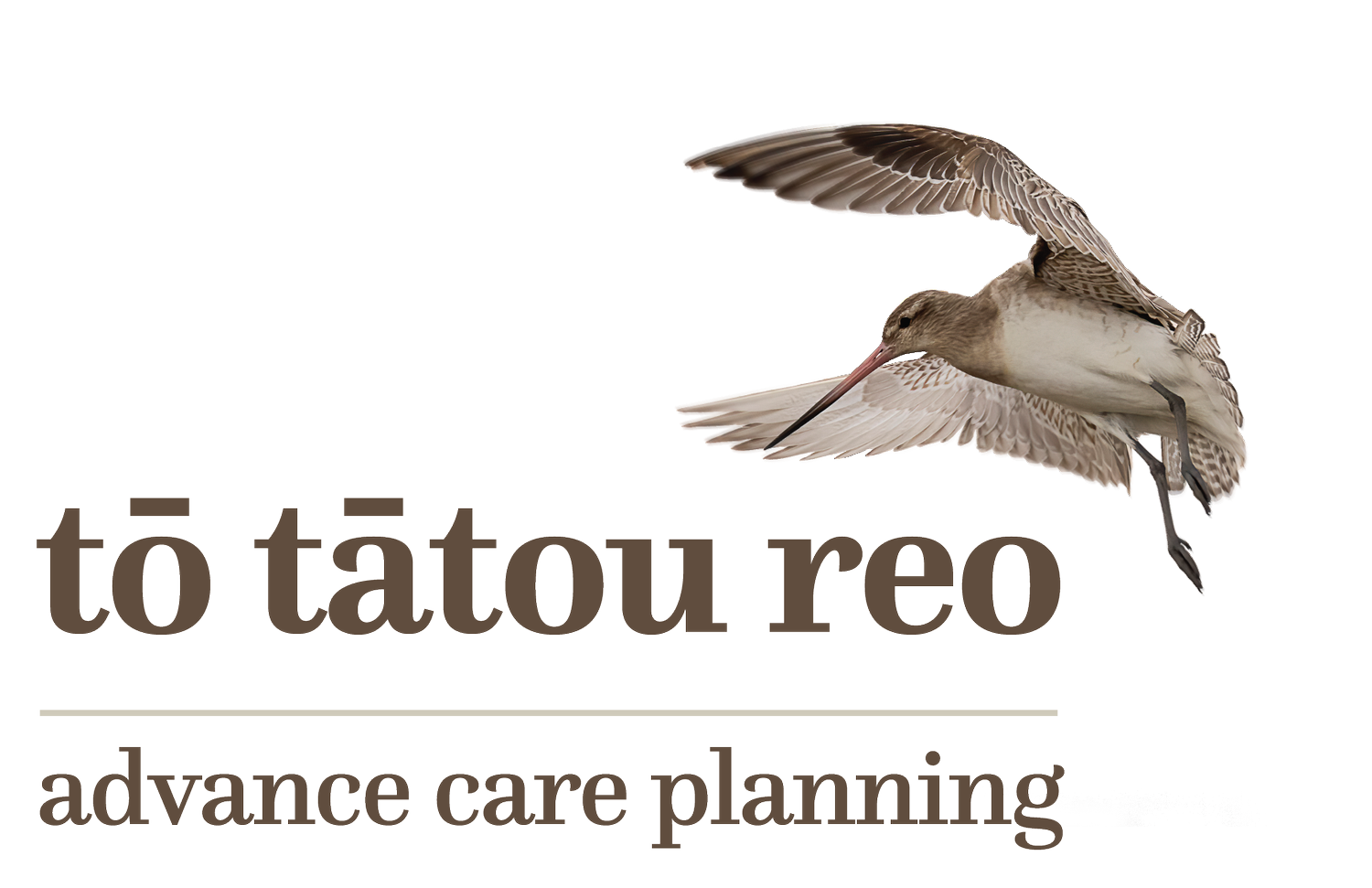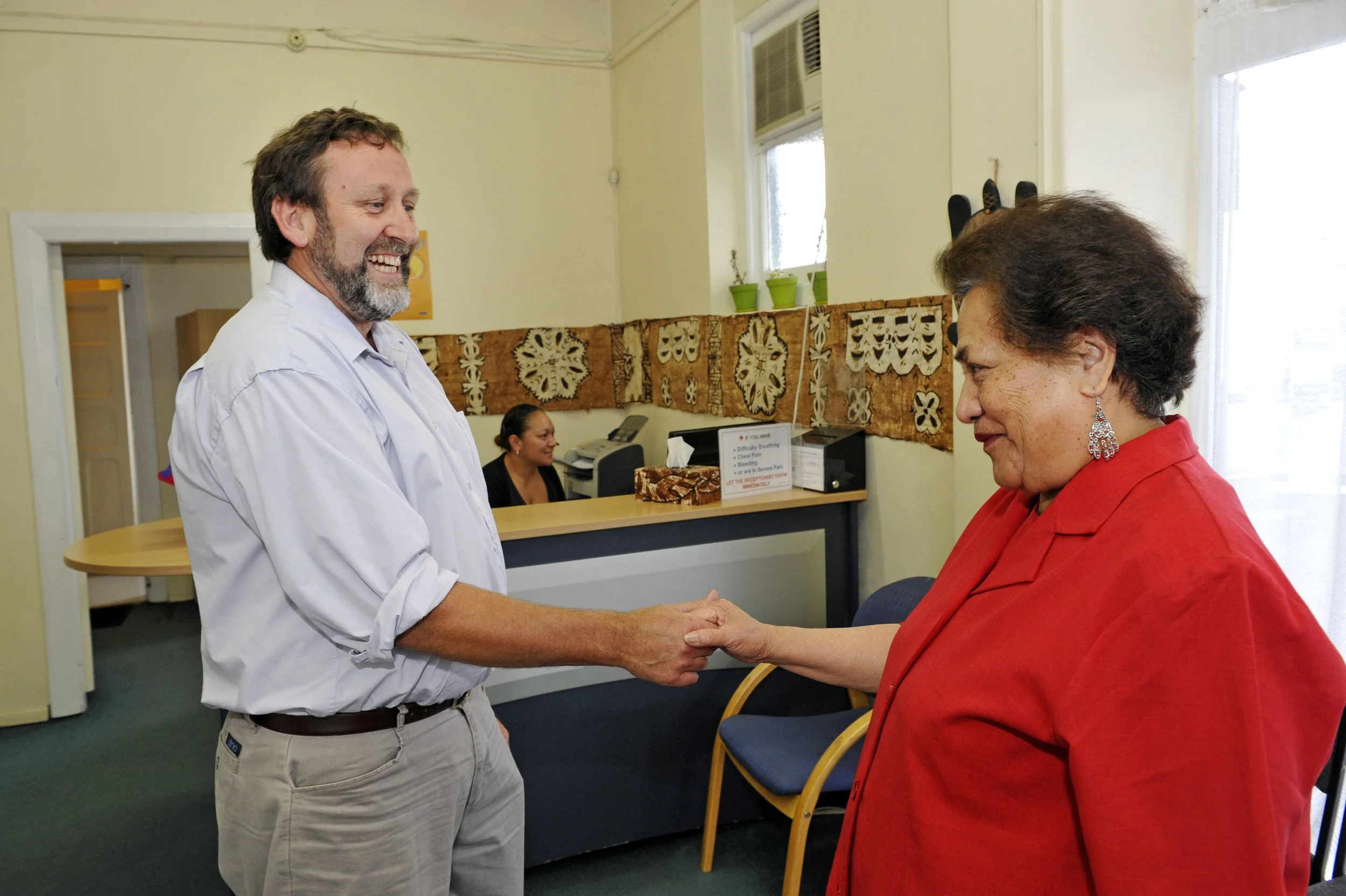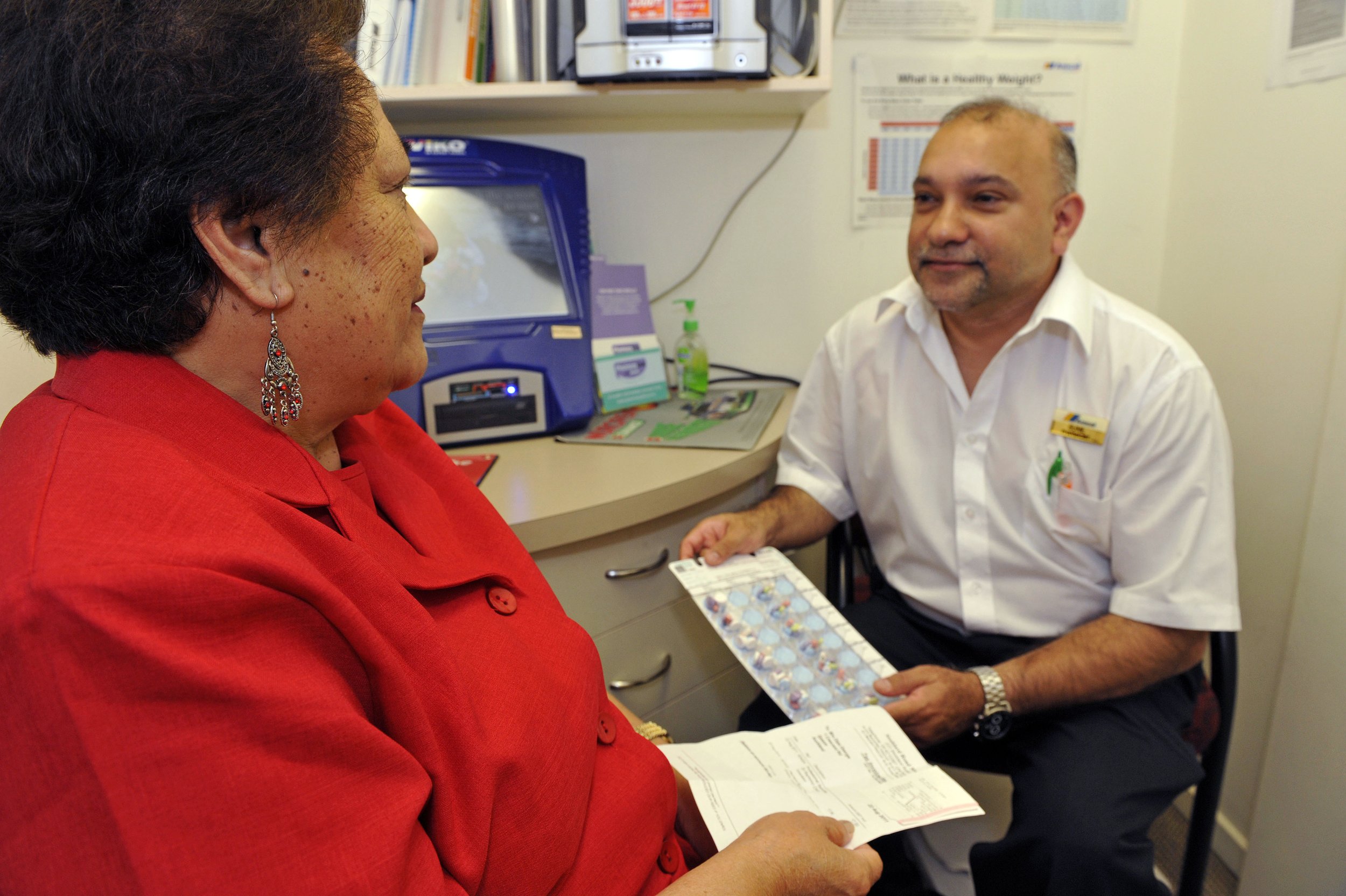
Ngā whāinga tauwhiro
Shared goals of care
Shared goals of care are when clinicians, patients and whānau explore patients’ values, the care and treatment options available and agree the goal of care for the current episode of care and if the patient deteriorates.
Shared goals of care is targeted advance care planning for an episode of care and comprises of a discussion and a decision.
We currently offer two shared goals of care plan templates
Shared goals of care for hospital admissions
Shared goals of care for aged residential care/long term care facilities.
These are nationally agreed templates that clinicians can use to record the shared goals of care discussions and document the shared goals of care decision for an episode of care.
The shared goals of care is the third stream of work in the patient deterioration programme (after New Zealand Early Warning Score and Kōrero mai).
The work is underpinned by the shared goals of care principles described here. The principles outline what is required for providers to have shared goals of care discussions with adult patients and their whānau.
Following the principles will ensure these important discussions occur with patients and whānau and are in line with their Te Tiriti o Waitangi responsibilities.
Why shared goals of care are important
When shared goals provide the basis for clinical treatment plans, there is less risk of a patient receiving unwanted or unwarranted treatments which is especially important if their condition deteriorates.
Evidence shows that engaging patients and whānau results in better health and care outcomes. The patient and whānau are more likely to feel valued and involved in their treatment, and their experience in hospital is better.
Providing excellent clinical care underpins clinicians’ values and drives their work ethic. Valuing shared goals of care discussions should become part of this care provision by all clinicians and links closely with choosing wisely. For some, this may mean a change in practice. It can be difficult and confronting to have these discussions but the outcomes warrant having them. There are guides and training that can help with these discussions, for example, the Serious Illness Conversation Guide.
Clinicians who communicate effectively, through sharing information and listening to seek understanding, can draw out patients’ values and preferences for care. This forms the basis for informed decisions about complex medical treatment options, should the patient’s condition deteriorate.
Read the case for change here. This document contains information about recognising and responding to acute deterioration and the importance of having shared goals of care discussions with patients and their whānau.
When shared goals of care discussions should take place
Shared goals of care are best explored when a patient is well, for example outpatient or when planning treatment or investigations are ideal settings to start these conversations.
However, during an unplanned episode of care shared goals of care discussions should take place early - before episodes of acute deterioration so everyone can engage fully without the pressures of an evolving clinical crisis. Discussions should be documented with all adult patients, ideally within 24 hours of admission and be reviewed and documented during the admission if there are changes in the patient’s condition. If patients have advance care plans and/or advance directives, these need to support the discussion.
The discussion may be straightforward and brief if the patient and whānau understand the clinical situation, and therefore may be appropriately discussed on admission or on a ward round. For others, the situation may be more complicated and involve several discussions before a decision can be made. Through listening, clinicians will be able to pick up subtle cues from patients and whānau that indicate more time may be needed for these discussions.
Current status
All Te Whatu Ora districts have engaged with shared goals of care for hospitals. Some have fully implemented, others have recently launched, while a third group are piloting in selected sites or are focussing on educating staff in the use of the Serious Illness Conversation Guide to support the shared goals of care kaupapa.
Shared goals of care for aged residential care is promoted by New Zealand Dementia Foundation as one of three evidence-based tools recommended to support high-quality, person-centred end-of-life and palliative care for our residents living with dementia mate wareware. The three-tool resource is available on the New Zealand dementia website.
Get in touch
Please let us know if you require any assistance. Our email is acp@tewhatuora.govt.nz
Resources available
Podcast: The semantics of CPR
Factsheet: capabilities for recognising and responding to acute deterioration
Clinical governance recommendations
Note: A clinical governance committee is needed to provide oversight and expert advice about the safety, effectiveness, and ongoing improvement of the recognition and response system.
This paper is intended for project teams responsible for implementing and improving recognition and response systems in New Zealand hospitals. It briefly outlines recommendations for ongoing clinical governance of recognition and response systems.
Stakeholder assessment template
Note: This template forms a part of the patient deterioration preparation and implementation guide. It can be used to document the level influence and interest your stakeholders have in the success of the project, then identify how you will engage with them
Related Resources
ARC-specific resources
It has never been more important to understand what matters most to your residents and their whānau, to be prepared for any future change in their health and to know what their priorities, concerns and preferences might be if their health did deteriorate.
In addition to the resources elsewhere on this webpage, we have developed some specific aged residential care resources to support you and other staff working in aged residential care (ARC) to use the Serious Illness Conversation Guide and capture any shared goals of care for residents
When to have shared goals of care discussions
Shared goals of care discussions are part of the overall assessment and planning for residents.
We recommend that you aim to have this discussion during the first two or three weeks of a resident’s stay as part of the admission process and development of their long-term plan.
The discussion is not a one-off discussion. It would be ideal to revisit the shared goals of care decision with the resident and whānau as part of regular care plan reviews or where there has been a significant change in the resident’s health.
We recommend that shared goals of care discussions are led by a senior clinician after they have gathered as much information as possible from the wider care team working with the resident.
Demonstration video
We have created a 25-minute-long video demonstrating how to prepare for, talk about and capture goals of care for your residents. This demonstration video is just one example of a shared goals of care discussion. We created this example using Zoom as we were under COVID level 3 at the time of recording. Ideally these discussions would take place in person.
We have used the Aotearoa Serious Illness Conversation Guide to support this shared goals of care discussion.
This video is a supplement to the Serious Illness Conversation Guide training video and we recommend that before you watch this ARC video that you watch the Serious Illness Conversation Guide communications skills training video and have copies of the Aotearoa Serious Illness Conversation Guide and ARC shared goals of care form in front of you.
ARC shared goals of care form
We have created an ARC-specific shared goals of care form, to capture the discussion and document the shared goals of care for residents.
Shared goals of care aged residential care form (fillable PDF)
There are two fact sheets that will help you with this form:
Fact sheet for nurses and Allied health workers supporting shared goals of care decisions (PDF)
The form is a fillable PDF you can add your facility’s logo to. If you do use it and want to save it as a final version that cannot be edited, you will need to 'Print to PDF' before you save or share it. See the PDF below for instructions on how to do that.


